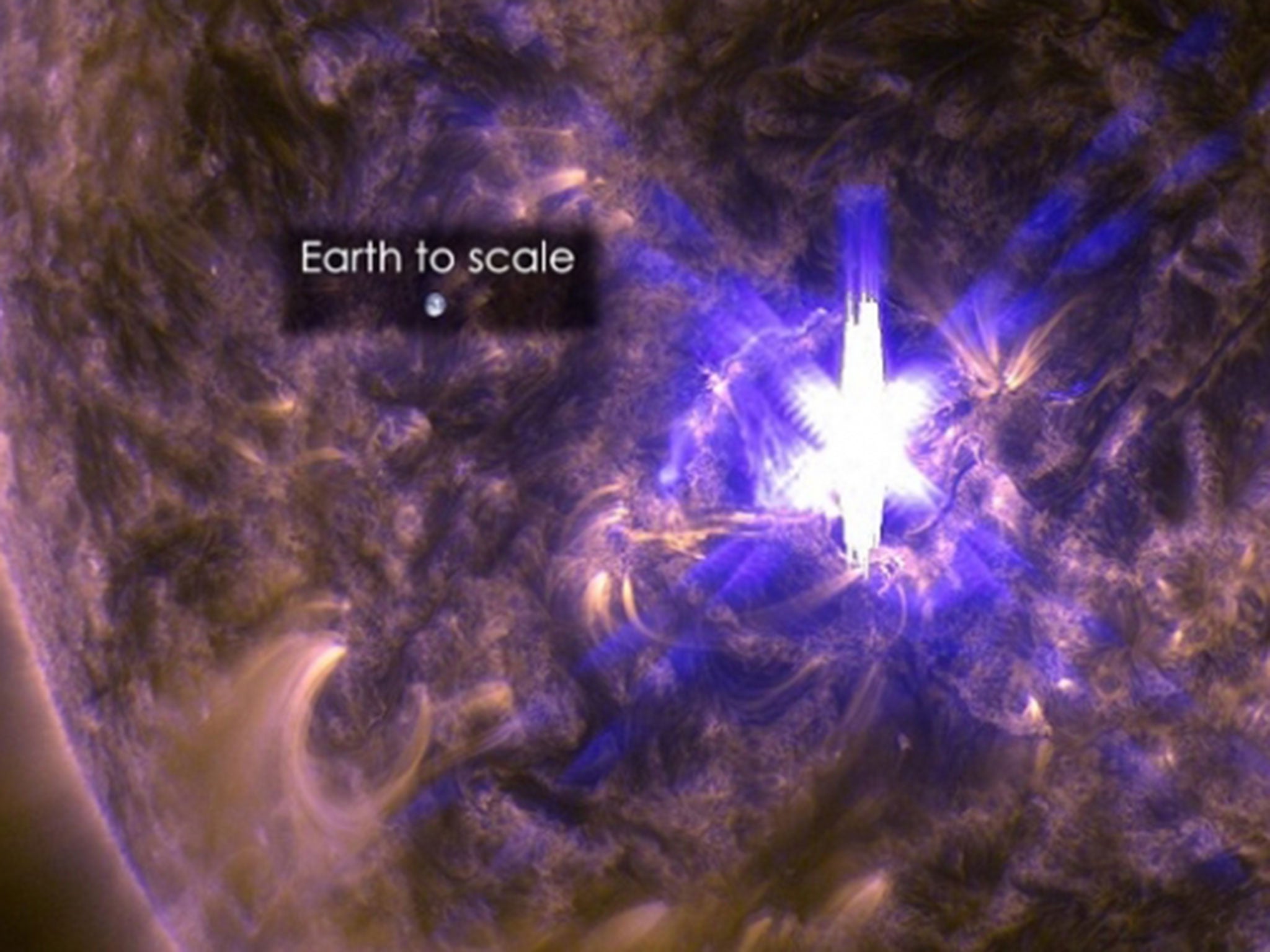Nasa video shows massive solar flare that is the equivalent of millions of 100-megaton atomic bombs
The X-class solar flare is the biggest one recorded this year

Your support helps us to tell the story
From reproductive rights to climate change to Big Tech, The Independent is on the ground when the story is developing. Whether it's investigating the financials of Elon Musk's pro-Trump PAC or producing our latest documentary, 'The A Word', which shines a light on the American women fighting for reproductive rights, we know how important it is to parse out the facts from the messaging.
At such a critical moment in US history, we need reporters on the ground. Your donation allows us to keep sending journalists to speak to both sides of the story.
The Independent is trusted by Americans across the entire political spectrum. And unlike many other quality news outlets, we choose not to lock Americans out of our reporting and analysis with paywalls. We believe quality journalism should be available to everyone, paid for by those who can afford it.
Your support makes all the difference.Images have been released by Nasa showing the Sun’s biggest solar flare of 2015.
In the incredible footage taken by Nasa’s Solar Dynamics Observatory on Wednesday, an X-class solar flare, the strongest category of solar flare, is captured.
Solar flares create powerful bursts of radiation from the Sun’s surface. Although this radiation is unable to penetrate through Earth’s atmosphere, it is able to disrupt the area in which satellite signals travel.
Solar flares occur when magnetic energy builds up in the sun’s atmosphere and is quickly released.
Watch More: Nasa tests most powerful rocket ever made
Nasa releases spectacular images of year's first solar flare
Radiation is then emitted across the electromagnetic spectrum, from soft X-rays to gamma rays.
The latest solar flare is rated as an X-class flare, the most powerful and is said to have the same energy as millions of hydrogen bombs.
The flare has already led to one hour-long blackout, with the US Space Weather Prediction Centre in Boulder, Colorado confirming that some high-frequency radio communications went down on Wednesday.
More disruption to satellite signals and communications are expected today and over the weekend.
Join our commenting forum
Join thought-provoking conversations, follow other Independent readers and see their replies
Comments